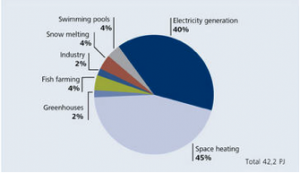1. Chernobyl, Ukraine 1986

The Chernobyl Nuclear disaster is widely considered to have been the worst power plant accident in history, and is one of only two classified as a level 7 event on the International Nuclear Event Scale. The battle to contain the contamination and avert a greater catastrophe ultimately involved over 500,000 workers and cost an estimated 18 billion rubles. The official Soviet casualty count of 31 deaths has been disputed and long-term effects such as cancers and deformities are still being accounted for.
How it occur??
On April 26th, 1986, at 1:23 am, Alexander Akimov did what he and thousands of other nuclear plant operators have been trained to do. When confronted with confusing reactor indications, he initiated an emergency shutdown of Unit 4 of the large electricity generating station near Pripyat in Ukraine.
The operating crew was planning to test whether the turbines could produce sufficient energy to keep the coolant pumps running in the event of a loss of power until the emergency diesel generator was activated.
To prevent any interruptions to the power of the reactor, the safety systems were deliberately switched off. To conduct the test, the reactor had to be powered down to 25 percent of its capacity. This procedure did not go according to plan and the reactor power level fell to less than 1 percent. The power therefore had to be slowly increased. But 30 seconds after the start of the test, there was an unexpected power surge. The reactor’s emergency shutdown failed.
The reactor’s fuel elements ruptured and there was a violent explosion. The 1000-tonne sealing cap on the reactor building was blown off. At temperatures of over 2000°C, the fuel rods melted. The graphite covering of the reactor then ignited. The graphite burned for nine days, churning huge quantities of radiation into the environment.
2. Fukushima, Japan 2011

The Fukushima Daiichi nuclear disaster was a series of equipment failures, nuclear meltdowns and releases of radioactive materials at the Fukushima, Nuclear Power Plant, following the Tohoku Tsunami on 11 March, 2011. It is the largest nuclear disaster since the Chernobyl disaster of 1986 and only the second disaster to measure Level 7 on the INES.
HOW it occur?
The Fukushima Daiichi nuclear power station located in the Pacific Ocean coast received huge damage by the earthquake and tsunami. The piping facility in the building, the facilities for the external power supply and backup power were destroyed. The next day, 12th in the early morning, the leakage of radioactive materials had been found in front of the main gate of the nuclear power plant. The steam was filled in the building by the core melt down caused by the dysfunction of the cooling system.
HOW can make nuclear technology safer.
1.high-quality design & construction,
2.equipment which prevents operational disturbances or human failures and errors developing into problems,
3.comprehensive monitoring and regular testing to detect equipment or operator failures,
4.redundant and diverse systems to control damage to the fuel and prevent significant radioactive releases,
5.provision to confine the effects of severe fuel damage (or any other problem) to the plant itself.
References
http://www.world-nuclear.org/information-library/safety-and-security/safety-of-plants/safety-of-nuclear-power-reactors.aspx
http://fukushimaontheglobe.com/the-earthquake-and-the-nuclear-accident/whats-happened








